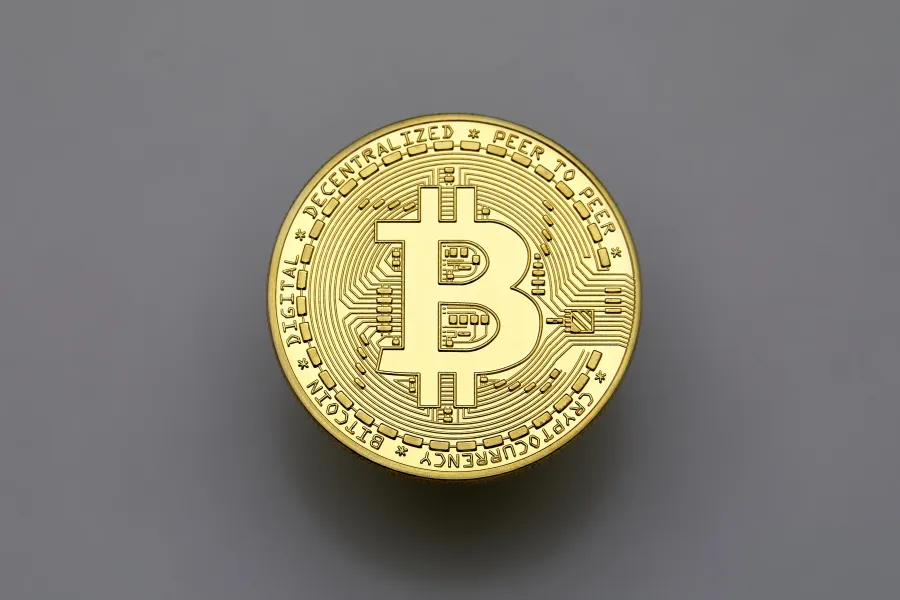Ethereum Shanghai upgrade pushed to April: Will there be too much selling pressure?
This week, our blockchain experts assessed the following topics:
- Ethereum Shanghai upgrade pushed to April: Will there be too much selling pressure?
- NFTs are still making waves. And now Amazon is coming
- The stablecoin market records mixed performance
Our bi-weekly Crypto Industry Report provides you with valuable information on the global crypto industry – picked and analysed by our blockchain experts.
Ethereum Shanghai upgrade pushed to April: Will there be too much selling pressure?
Ethereum stakers have been eagerly awaiting the Shanghai upgrade, which will enable them to withdraw their staked ether. Stakers’ funds have been locked since Ethereum introduced the proof-of-stake Beacon Chain in December 2020. The upgrade was originally slated to take place sometime in March but was pushed by about two weeks to April during a recent execution layer meeting. The upgrade will occur approximately two weeks after the Goerli testnet launch on March 14. Goerli testnet permits developers to test the Shanghai upgrade before it launches on the mainnet.
While stakers are excited about the upcoming upgrade, the Ethereum Community is worried that massive withdrawals will take place, causing the price of ether to fall as ETH is dumped on the market with the hope of earning a profit. There’s about 17.5 million in staked ETH, worth an estimated $27 billion at the time of writing. Experts believe that these worries are misplaced because withdrawals will not occur at the same time since there’ll be a queue. Validators will have to meet certain requirements to withdraw fully or partially. For example, the validator node must be online and attest to blocks for a minimum of 256 epochs (4 epochs last about 24 minutes). Moreover, there can only be one full withdrawal in progress at a time. That means the impact of ETH withdrawals won’t be immediate.
Also, a report by CryptoQuant expects the selling pressure as a result of staking withdrawals to be moderate because approximately 60% of the stakers are in loss positions. Therefore, they’re unlikely to withdraw. Solo stakers, who have invested a lot to run their own nodes, are also unlikely to withdraw because they’re probably bullish on Ethereum. Additionally, experts reckon that as some stakers leave, new people will join Ethereum staking and the numbers may grow significantly in the next 18 months compared to what they are now. This is because the risk in staking will have declined once more, once withdrawals are activated.
NFTs are still making waves. And now Amazon is coming
NFTs are dead – long live NFTs. As it stands, the sales of these digital collectibles have seen some improvement again, rising beyond the $2 billion mark in February. This is the best performance since Terra’s crash in 2022. The surge is contributed to a controversial NFT marketplace called Blur.
The new platform surpassed the top NFT marketplace OpenSea in trading volumes and market share thanks to a financial incentive that rewards loyal users for trading high-value NFTs and for not trading on other platforms. The incentive program entails giving Blur tokens to users that have traded NFTs over the last three months through an airdrop. Traders have, therefore, been trading NFTs back and forth to increase their Blur token holdings, an activity that has contributed to the high trading volumes. 30-day trading volumes on Blur were $1.62 billion at the time of writing.
That aside, NFTs are yet again getting more support prominent support from the traditional system. It is Amazon that is entering the space, and its upcoming NFT platform indicates that NFTs are here to stay. The world’s biggest e-commerce company is projected to launch the platform on April 24th. However, it will only cater to US customers. The NFT platform will promote web3 adoption since it will open up NFTs to a wider market. NFTs on Amazon's digital marketplace will reportedly be tied to real-world assets (RWAs). That means users can purchase an NFT and have the attached real-world asset delivered to their doorstep.
In other NFT news, the company behind the most successful NFT collection (Bored Apes NFTs), Yuga Labs, has now ventured into Bitcoin ordinals. The new collection called TwelveFold consists of 300 images of hand-drawn art. Yuga Labs raised $16.5 million worth of Bitcoin through an auction that kicked off on March 5 and ended the next day. Only 288 bidders out of 3,246 were successful.
Despite holding a seemingly successful auction from a financial perspective, Yuga Labs was criticised for its stone age auction methodology. That’s because the auction required all bidders to send BTC to the company’s wallet. Those who didn’t win would then have to trust that the company would refund their BTC.
The stablecoin market records mixed performance
USD Coin (USDC) and Binance USD (BUSD) experienced an outflux in Feb amid the US regulatory crackdown. BUSD’s performance is still declining in March, while USDC has recovered this month. BUSD’s performance could be attributed to the fact that the issuer, Paxos, stopped minting the stablecoin following a direction from the New York Department of Financial Services. As a result, the stablecoin’s market cap has dropped from $16 billion to less than $9 billion, as of this writing.
On the other hand, Tether (USDT) has been enjoying a positive performance. Its market cap has surged by about $5.3 billion to over $71 billion at the time of writing. This is USDT's best performance in 15 months, leaving it the biggest stablecoin in the market.
While some stablecoins are suffering from the ongoing regulatory crackdown, experts think these digital fiat currencies on the blockchain could increasingly alleviate the crypto sector’s reliance on the TradFi institutions for on and off-ramps. Some researchers are also examining how stablecoins can be linked to the financing of the real economy. For instance, this research paper shows a relationship between stablecoins and commercial papers when the latter are used as reserve assets. A different research paper investigates the role stablecoins could play in machine-to-machine payments in the European economy. As these studies try to argue: Stablecoins may very well have a role to play in the future of finance.
Share post

Related Posts

To be continued: SEC pushes back at Coinbase
SEC pushes back against Coinbase's claim of no regulatory jurisdiction, stating the crypto exchange knowingly violated securities laws. Meanwhile, Gemini, owned by the Winklevoss twins, files a lawsuit against Digital Currency Group and CEO Barry Silbert alleging fraud and deception following the collapse of a lending venture. The Bank for International Settlements survey reveals that 93% of central banks are working on Central Bank Digital Currencies (CBDCs) which are seen as potential geopolitical policy tools and a challenge to the dollar's dominance. The race for a Bitcoin ETF intensifies, with BlackRock refiling its application featuring Coinbase as the market surveillance partner, as the Grayscale Bitcoin Trust's discount to net asset value narrows, potentially indicating the transformation into a proper ETF.

BlackRock fever: The ETF filing spree and institutional appetite
BlackRock filed for a Bitcoin ETF with the SEC, inspiring similar applications from firms like WisdomTree, Invesco, and Fidelity, and boosting Bitcoin's value. Traditional finance institutions such as Fidelity and Nasdaq are showing increased interest in crypto, with moves towards exchange and custody services. The defunct crypto exchange FTX, under new CEO John Ray III, is planning a potential revival after recovering significant assets. Meanwhile, the IMF is developing a global CBDC platform for cross-border transactions and DAI, a major stablecoin, is diversifying its backing from USDC to include real-world assets.

SWIFT explores blockchain interoperability
SWIFT has partnered with Chainlink to experiment with leveraging its infrastructure for transferring tokenized value across blockchain networks. The trials will address interoperability, regulatory challenges, and operational drawbacks for financial institutions in a blockchain environment. Chainlink will provide connectivity between private and public blockchains. SWIFT's findings will be published later this year.

China wants an Internet 3.0, while Hong Kong gears up for crypto trading launch
China is striving for advancement in Internet 3.0 technologies, with Beijing's white paper outlining plans to invest in the development of the metaverse and Web3 tech such as non-fungible tokens, but not cryptocurrencies due to the country's previous ban. Meanwhile, Hong Kong is launching its new crypto trading regulations, allowing retail investors to participate from June 1, 2023, with exchanges like Huobi Hong Kong beginning to offer spot trading to retail and institutional clients. Furthermore, the Cybersecurity and Technology Crime Bureau of the Hong Kong Police Force is launching a metaverse platform, 'CyberDefender', to educate the public about potential threats and crime prevention in the metaverse.

BRC-20: Innovating on Bitcoin is the new cool
A new Bitcoin “token standard” called BRC-20 is the hottest thing right now in the crypto space. It was introduced in March 2023 by a pseudonymous person called Domo. Bitcoin Request for Comment 20 (BRC-20) is an experiment that brings fungible tokens to the Bitcoin blockchain using the Ordinals protocol. Ordinals rely on ordinal theory, enabling the identification and tracking of individual satoshis within Bitcoin's existing supply, while also allowing them to be inscribed (associated) with data. Through this technique, satoshis (sats) are given ordinal numbers starting with zero. Anyone can add a script file to a sat to create and transfer a BRC-20 token on the Bitcoin blockchain. BRC-20 tokens are created using three functions: deploy, mint, and transfer.

US versus EU: Giants fighting for regulatory clarity
It is official now: The European Parliament voted overwhelmingly in favour of Markets in Crypto Assets (MiCA), legislation that will guide the crypto sector in all 27 European Union member states. 517 parliament members voted for it, while 38 voted against it. This approval makes Europe the first continent with comprehensive rules for cryptocurrencies. Also, it means that all EU member states will have unified crypto regulations. So, if a crypto business is approved in one EU member country, it could easily expand operations to another member state. The EU’s milestone was lauded by Binance as well as Kraken and Coinbase.

Ethereum: Another milestone reached with the Shanghai Update
On April 12, 2023, Ethereum successfully executed the planned Shanghai update also known as Shapella. The upgrade allows validators to unstake their staked ETH and withdraw their rewards, as well as staked ether if chosen. Now that another level of uncertainty has waned for the biggest smart contract blockchain, this new feature could attract more investors to stake their ether.

CFTC versus Binance:
Clash of the titans
The world’s leading crypto exchange by volume, Binance, alongside its CEO, Changpeng Zhao, and ex-Chief Compliance Officer, Samuel Lim, are being sued by the US Commodity Futures Trading Commission (CFTC).

Stablecoin USDC briefly lost its
peg. What do we learn from this?
One of the top stablecoins by market cap, USD Coin (USDC), de-pegged briefly from the US dollar on March 11 following the collapse of Silicon Valley Bank (SVB). Circle, the stablecoin’s issuer, held $3.3 billion in USDC reserves with the bank, which caused panic as investors rushed to withdraw their funds, assuming USDC could implode because of insufficient backing. However, the amount represented less than 8% of the stablecoin’s reserves.

Are regulators trying to make up for it by cracking down?
Following the infamous events of 2022, US regulators are turning up the heat on crypto services and products in 2023. One of the services they have targeted recently is custodial crypto staking, a process whereby customers have a financial service provider lock up their coins with a blockchain protocol over a certain period of time in exchange for rewards. This comes as no surprise since the SEC’s chairman, Gary Gensler, previously said that crypto staking looks very similar to lending. US crypto exchanges that offer this service are, therefore, in the SEC’s line of fire.